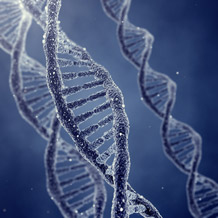
Researchers explored the role of epigentics in autism
Autism paper makes top ten
A study led by a University of Exeter Medical School scientist has been highlighted as one of the top ten advances in autism research of 2013.
Autism Speaks, the world’s leading autism science and advocacy organisation, annually asks its science leadership and scientific advisory committee to consider the hundreds of studies that have been reported on in the organisation’s news column during the year.
This year, Professor Jonathan Mill featured in the top ten, for his study which analysed the differences between identical twins with autism, to examine factors beyond genetic inheritance. The study was supported by Autism Speaks and the Medical Research Council, and was published in the journal Molecular Psychiatry in April.
By studying identical twins who differ in autism diagnosis or symptom severity, researchers found tell-tale clues showing how non-genetic influences may contribute to – or protect against – autism.
Professor Mill, who collaborated with colleagues at Kings College London on the study, said: “Identical twins often differ in autism symptoms, indicating that factors other than genetic variation are involved. This led us to explore the role of epigenetics, controlling the expression, or activity, of genes without changing their underlying DNA code.
Specifically, the researchers looked at DNA methylation, a mechanism involved in silencing the activity of genes. Using advanced technology, they compared DNA methylation across the genomes (entire DNA sequence) of 100 identical twins (50 pairs). In some cases, both twins had autism. In others, just one or neither was affected.
Professor Mill said: “We identified distinctive patterns of DNA methylation associated with autism diagnosis, related behaviour traits and increasing severity of symptoms,”
Autism is a general term used to describe a group of complex developmental brain disorders – autism spectrum disorders – caused by a combination of genes and environmental influences. These disorders are characterised, in varying degrees, by communication difficulties, social and behavioural challenges, as well as repetitive behaviours. An estimated one in 88 children in the U.S. is on the autism spectrum – a 78 percent increase in six years that is only partly explained by improved diagnosis.
Alycia Halladay, Autism Speaks senior director of environmental and clinical sciences, said: “This was the first study to take a whole genome approach to studying epigenetic influences in twins who are genetically identical but have different symptoms. These findings open the door to future discoveries in the role of epigenetics – in addition to genetics – in the development of autism symptoms.”
DNA pic via Shutterstock.
Date: 19 December 2013
